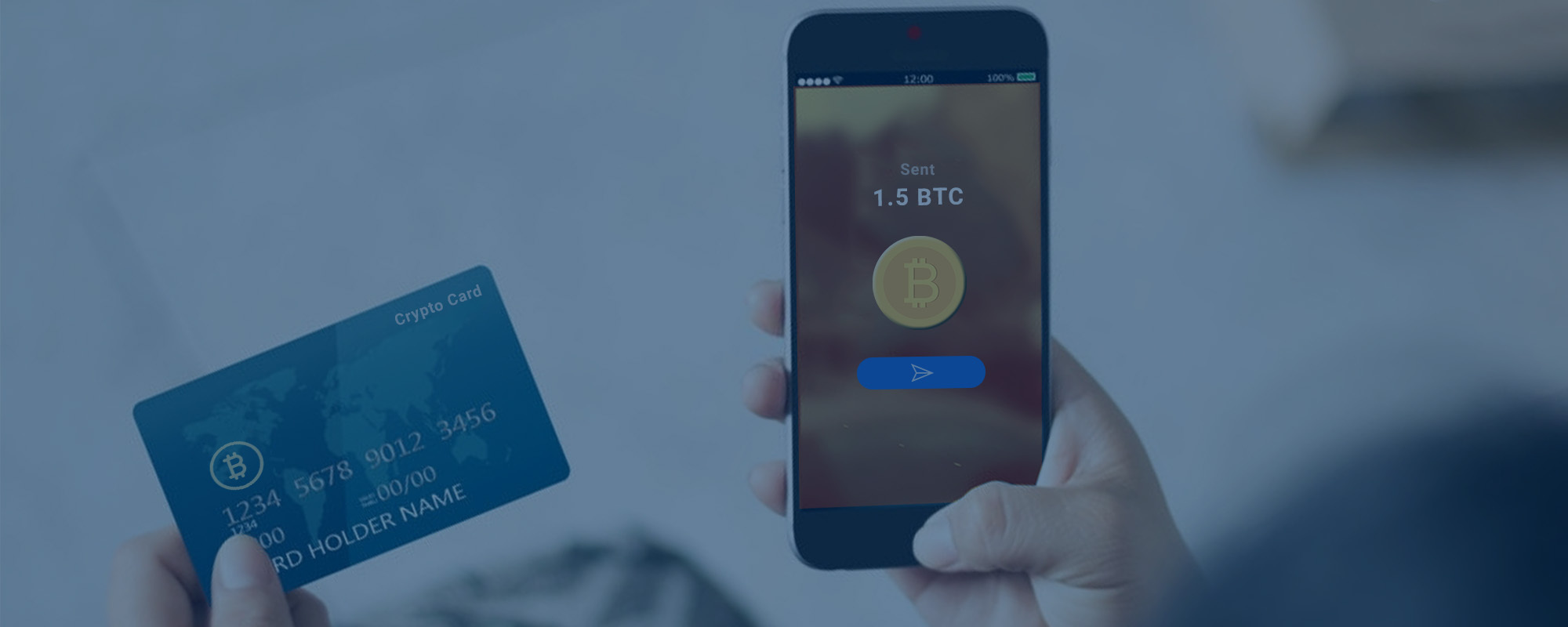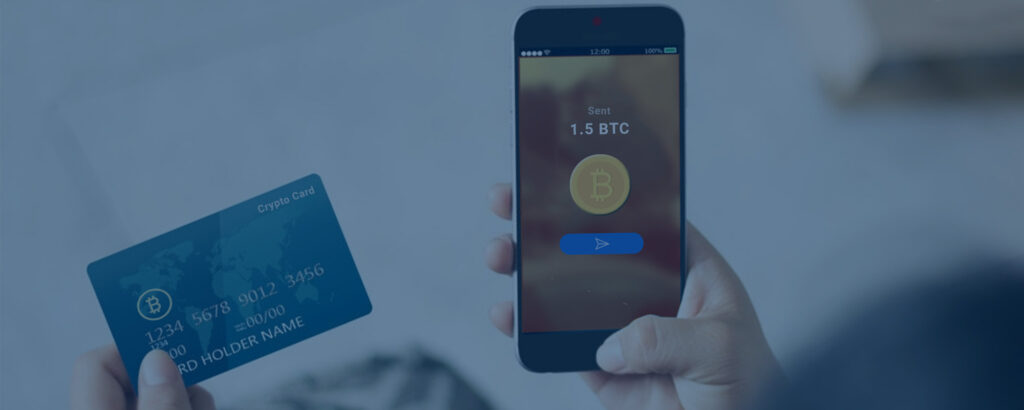
How about you pay for your coffee with Bitcoin? Crypto cards make this a very real possibility. Cryptocurrency is slowly being accepted as a legitimate form of payment and this can help make the process accessible and easy for everyone.
Visa Inc said in July, that its customers globally spent more than $1 billion on crypto-linked cards in the first half of this year.
So what exactly is it and how does it work? Let’s explore:
- What are crypto cards?
- How do crypto cards work?
- How are crypto cards different from traditional credit and debit cards?
- What are the benefits offered by crypto cards?
- Binance-based crypto card
- Closing thoughts
What are crypto cards?
Its function are similar to traditional credit cards, except for the obvious switch to cryptocurrency for the source of the fund and the reward payment. With Visa and MasterCard backing, users can stretch their flexibility in spending and simultaneously receive rewards in the form of cryptocurrency.
Like the traditional credit cards, for crypto credit cards, the fund is sourced from credit linked to the digital wallet. The existence of a prepaid card on the other hand is similar to a traditional debit card. The fund is sourced from the existing tokens in the digital wallet. Unlike debit cards, these aren’t linked to a bank account hence the prepaid cards need to be topped up regularly from smooth transactions. A bonus of these cards is the feature to HODL, or to retain the crypto coins and spend only the amount you need for a particular transaction. Now we can move on to how they work:
How do crypto cards work?
Because of the volatile nature of cryptocurrency, vendors may not always be happy to accept a cryptocurrency in an exchange for their products. This is where the crypto debit card works to make cryptocurrency more accessible in the practical world. When swiped the payment processing company proceeds to take crypto coins equivalent to the value of the product being purchased from the account of the holder. The crypto coins are then converted into fiat currency and delivered to the vendor’s account. The process happens all within seconds hence the transaction is smooth and easy for both parties involved.
How are crypto cards different from traditional credit and debit cards?
Crypto credit card vs Traditional credit card
Cryptocurrency reward credit cards are no different from most traditional rewards credit cards. Much like most credit cards, transfers are facilitated by popular processing networks -Visa or Mastercard. If your crypto card is issued by Visa, your card will be accepted wherever Visa credit cards are accepted.
Depending on their processing network, crypto credit cards can also benefit from the advantages and card protections offered by Visa or Mastercard. You can use a crypto card for purchases just like any other type of credit card, and except every time you spend with your crypto credit card, you will earn rewards. The rewards are most often cashback that is deposited back as a cryptocurrency. Some crypto credit cards allow you to redeem earnings in cryptocurrency.
Debit card vs Crypto card
Crypto reward debit cards can be used as the standard debit card, but instead of being backed by a bank account, they are backed by a crypto wallet. They resemble a prepaid debit card more than a traditional debit card.
First, the cryptocurrency is converted into the fiat currency chosen by the user before being loaded onto the debit card. Once loaded and ready for use, purchases are processed in that specific currency. The rewards are awarded as a specific digital currency based on the debit card.
Many of these crypto debit cards also earn rewards in the form of cryptocurrencies on daily spending. Some cards can also offer quite lucrative rewards, depending on the value given for the digital currencies.
Crypto debit cards, like the other cards, are backed by major payment processing networks such as Visa and Mastercard. If a crypto rewards debit card is issued by Visa, the card will work anywhere Visa is accepted. It even leaves in the option to withdraw money from ATMs around the world with cryptocurrency debit cards.
Crypto credit card vs Crypto debit card
Although having the ability to earn rewards in the form of cryptocurrencies is true for both cards, crypto credit cards are a little different from the prepaid debit options available.
The main difference is that with crypto credit cards, cardmembers make purchases on credit through the credit line authorized by the issuing institution and are responsible for paying off the balance. Crypto debit cards simply imply that the user has their funds, if they don’t have the money, they cannot use their card.
Compared to crypto credit cards, the rewards earned with crypto prepaid debit cards are in bank-specified cryptocurrency, which is typically much less valuable than some of the cryptocurrencies popular coins as Bitcoin and Ethereum.
Another key difference is the mandatory wagering proof for many prepaid debit cards. Proof of Stake, in its most basic form, is when a cryptocurrency holder contributes a portion of their digital coins to a specific blockchain network to support that network. Some debit cards require proof of stake as a condition of card membership.
These requirements can be quite significant, and linking your money to the issuing financial institution may not be worth the cost of the opportunity. But let’s review the flip side, the benefits offered by this model cryptocurrency cards.
What are the benefits offered by crypto cards?
Cryptocurrency cards offer some benefits that traditional cards cannot offer. For one, these cards are not subjected to foreign exchange rates. Regardless of the geographic location, the number of crypto coins exchanged to fiat currency remains the same. Some issuers have the option to waive the ATM charges. Crypto.com cards give an additional interest of 2% annually on fixed-term deposits.
Apart from the rewards earned through the cards they have other benefits too. Some of these cards allow you access to the top industry events and priority customer service. Some also offer assistance with real estate handling related assets. Beyond all these crypto cardholders stand to get the benefits offered by Visa for traditional cards.
Which blockchain network should you choose for the crypto card?
Binance-based crypto card
Binance blockchain has launched its crypto card and it is said to be accepted by more than 60 million merchants worldwide, making crypto-based transfers easier and more accessible. Binance claims that topping up the debit card is as easy as transferring from BNB tokens between wallets. To celebrate its launch Binance offered up to 7% cashback in Europe. By far that is the highest cashback rate available in the market.
How to apply for Binance crypto cards?
Existing Binance users can apply for the card on the Binance homepage and click on the “Binance card”. To be eligible to apply the person must be KYC level 1 verified. The card is available only to residents of these countries: Austria, Belgium, Bulgaria, Croatia, Republic of Cyprus, Czech Republic, Denmark, Estonia, Finland, France, Germany, Gibraltar, Greece, Hungary, Iceland, Ireland, Italy, Latvia, Liechtenstein, Lithuania, Luxembourg, Malta, Netherlands, Norway, Poland, Portugal, Romania, Slovakia, Slovenia, Spain, Sweden.
Now coming to the application process, upon navigating through the Binance card page, an option to “Get Started” appears, click this and then click “Order Card” to start the application. Read the KYC constant form and agree to the terms. Once that is done the “Order Card” page appears. Fill in the details about the name format that must appear on the card and then click continue. Then check and fill remaining required details. Then decide whether you need an auto top-up and proceed to agree to the privacy policy after consideration. Finally, click “Order Your Binance Card” to complete the process. With successful registration, the Virtual card becomes active and is valid till the physical card is delivered.
Activating the physical card
The Binance physical card activation button located in the card dashboard will be inaccessible until the card’s status has transitioned from “Pending” to “Shipped’. Once the status is marked as “Shipped” the Activate button can be pressed. After which the person must input the four last digits of the physical card. These four last digits must be taken from the physical card you just received. If the given information is verified then a prompt appears to enter CVV located on the back of the physical Binance card. If entered correctly it will activate the physical Binance card. The four-digit PIN code needed for ATM access is displayed. Remember it for future use.
Closing thoughts
Cryptocurrency cards present a better opportunity for people to use their digital currency in the offline world. The accessibility and the ease of use of these cards moreover help more people adapt to the method of decentralized finances and transactions.


